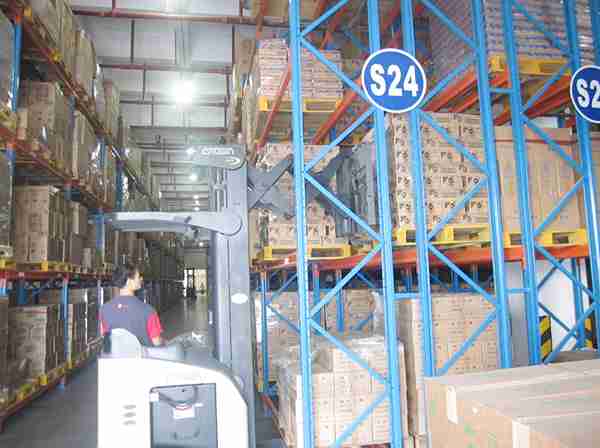📐 "First 50 Enterprise Queries Get Custom 3D Warehouse Design" Plan

Introduction: Why Pallet Depth Requirements Are Critical in Double Deep Racking
pallet depth requirements double deep,When designing a double deep racking system, warehouse managers must pay close attention to pallet depth requirements in double deep racking. Ignoring these specifications can lead to inefficient storage, safety risks, and wasted space. This guide dives deep into pallet depth requirements in double deep racking, covering:
- How pallet depth requirements in double deep racking impact storage density and workflow efficiency
- The relationship between pallet depth, beam length, and forklift compatibility
- Common mistakes in pallet depth requirements in double deep racking and how to avoid them
- Best practices for optimizing double deep racking based on pallet depth requirements
By the end of this guide, logistics professionals will understand how to maximize storage capacity while ensuring safety and accessibility.

1. What Is Double Deep Racking and How Do Pallet Depth Requirements Affect It?
Understanding Double Deep Racking
Double deep racking is a high-density storage solution where pallets are stored two-deep, unlike selective pallet racking, which only allows single-depth storage. This setup nearly doubles storage capacity but requires precise pallet depth requirements in double deep racking to function correctly.
Why Pallet Depth Requirements Matter
- Stability & Safety: Incorrect pallet depth requirements in double deep racking can cause pallets to overhang or become misaligned, increasing collapse risks.
- Forklift Accessibility: If pallet depth requirements in double deep racking are not met, forklifts may struggle to retrieve rear pallets efficiently.
- Space Utilization: Proper pallet depth requirements in double deep racking ensure maximum storage density without wasted space.
2. Standard Pallet Depth Requirements in Double Deep Racking
Most Common Pallet Depths & Their Applications
Different industries use varying pallet depth requirements in double deep racking. The most common standards include:
| Pallet Type | Depth (inches) | Industry Use |
|---|---|---|
| GMA Standard Pallet | 48″ | Retail, grocery |
| Euro Pallet (EUR) | 47.24″ | European logistics |
| Half-Pallet | 24″ | Pharmaceuticals, small parts |
| Oversized Pallets | 60″+ | Automotive, industrial |
How Pallet Depth Requirements Impact Beam Length
The formula for determining beam length based on pallet depth requirements in double deep racking is:
Beam Length = (Pallet Depth × 2) + 4-6 inches clearance
For example:
- A 48″ pallet requires a 102-inch beam (48×2 + 6″ clearance).
- A 60″ pallet needs a 126-inch beam (60×2 + 6″ clearance).
Miscalculating pallet depth requirements in double deep racking can lead to:
- Pallets sticking out, increasing collision risks.
- Wasted space, reducing storage efficiency.
3. Forklift Compatibility with Pallet Depth Requirements in Double Deep Racking
Do Standard Forklifts Work with Double Deep Racking?
No. Standard forklifts cannot reach the second pallet in double deep racking. Instead, warehouses must use:
- Double Reach Forklifts (extendable forks up to 72″)
- Articulating Forklifts (better maneuverability in tight aisles)
Key Considerations for Forklift Reach
- Maximum Fork Extension: Must exceed pallet depth requirements in double deep racking by at least 6 inches.
- Aisle Width: Narrow aisles (9-11 feet) require specialized forklifts.
4. Safety Risks from Ignoring Pallet Depth Requirements in Double Deep Racking
Common Hazards Due to Incorrect Pallet Depth
- Pallets Falling from Overhang (if beams are too short)
- Forklift Collisions (if pallets extend beyond racking)
- Racking System Overload (if weight distribution is uneven)
Best Practices for Safe Double Deep Racking
- Always measure actual pallet depth—don’t assume standard sizes.
- Use load backstops to prevent rear pallets from shifting.
- Inspect beams regularly for bending or damage.
5. Optimizing Storage Density with Proper Pallet Depth Requirements in Double Deep Racking
When to Use Different Pallet Depths
- 48″ Pallets: Best for general warehousing.
- 60″+ Pallets: Ideal for bulk storage but require reinforced racking.
- 24″ Half-Pallets: Perfect for small, fast-moving SKUs.
Hybrid Racking Solutions
Some warehouses use adjustable beam systems to accommodate varying pallet depth requirements in double deep racking.
6. Future Trends in Double Deep Racking & Pallet Depth Requirements
Automation & Robotics
- Automated Storage & Retrieval Systems (AS/RS) are making double deep racking more efficient.
- AI-powered forklifts can better adapt to varying pallet depth requirements in double deep racking.
Modular Racking Systems
- Adjustable pallet racking allows dynamic changes based on pallet depth requirements in double deep racking.
Conclusion: Mastering Pallet Depth Requirements in Double Deep Racking
Understanding pallet depth requirements in double deep racking is essential for maximizing storage efficiency, safety, and cost savings. By following industry best practices, warehouses can optimize their double deep racking systems for peak performance.
For further reading:
- RMI (Rack Manufacturers Institute) Guidelines
- OSHA Warehouse Safety Standards
FAQs About Pallet Depth Requirements in Double Deep Racking
1. Can I mix different pallet depths in the same racking system?
Yes, but it requires adjustable beams and careful planning to avoid instability.
2. What’s the maximum pallet depth for double deep racking?
Most systems support up to 60 inches, but verify with your racking supplier.
3. Do I need special forklifts for double deep racking?
Yes, double reach forklifts are necessary to access rear pallets.
4. How much clearance should I leave between pallets?
At least 4-6 inches to allow smooth forklift operation.
5. Can double deep racking be used with automated systems?
Absolutely—many AS/RS solutions integrate seamlessly with double deep configurations.




